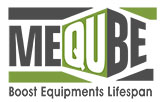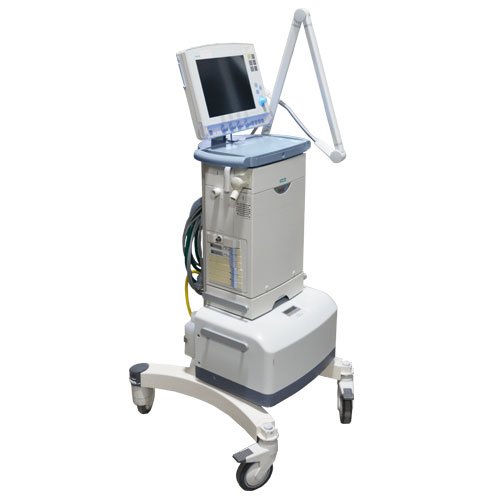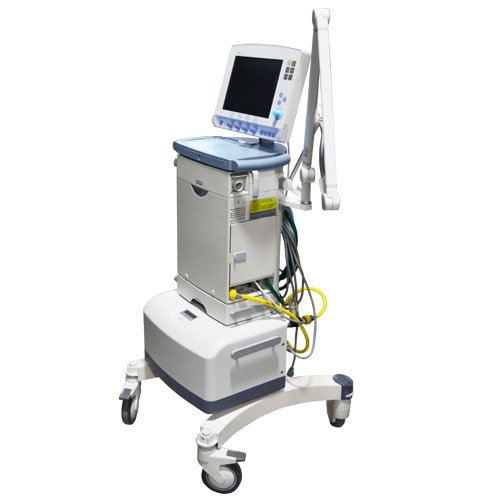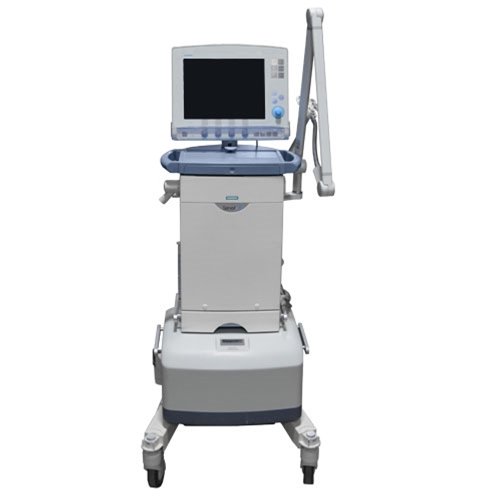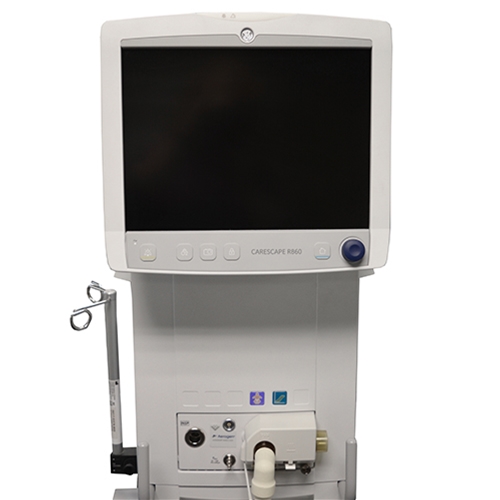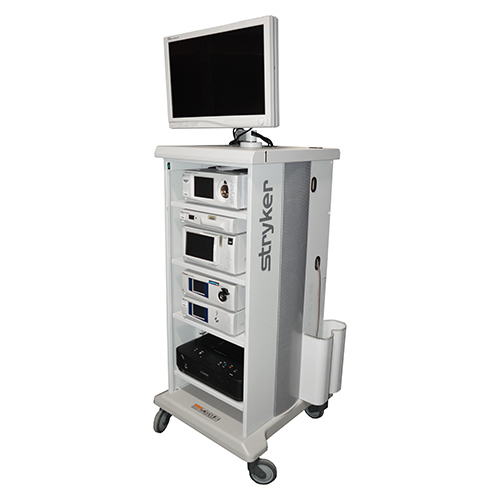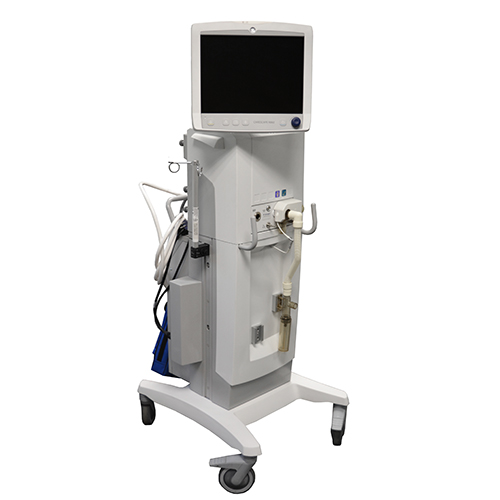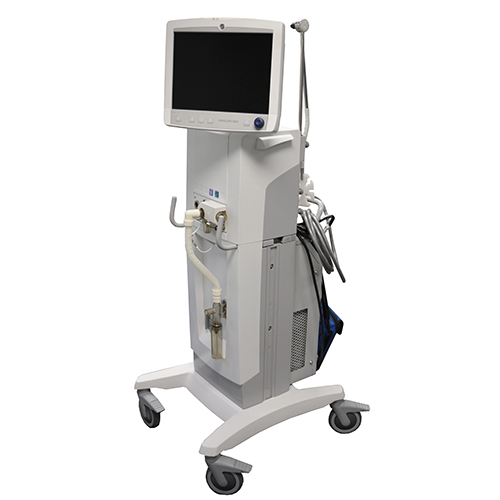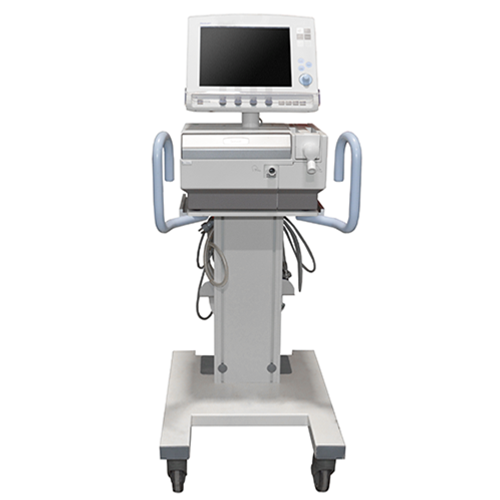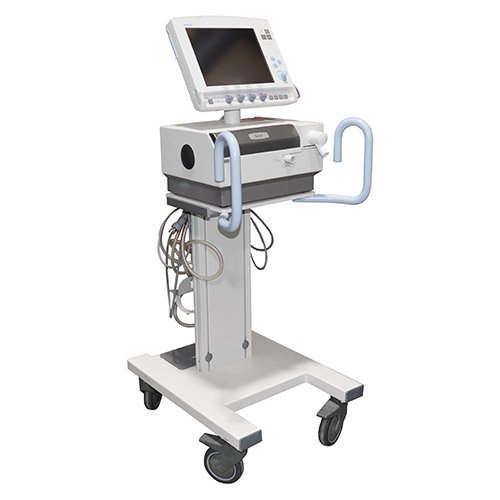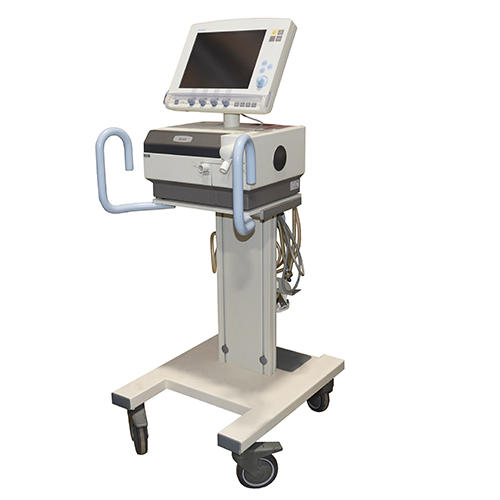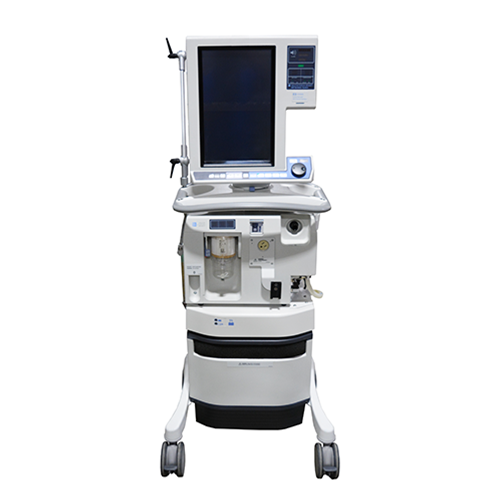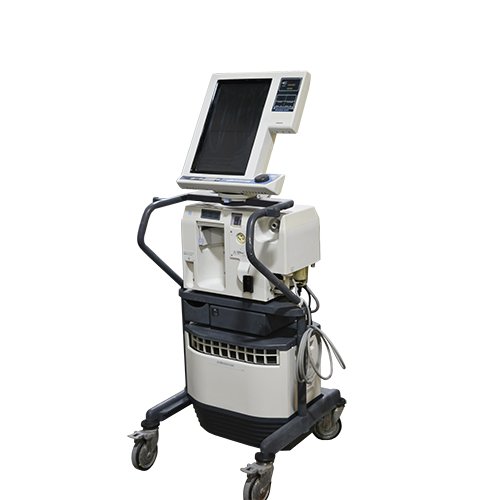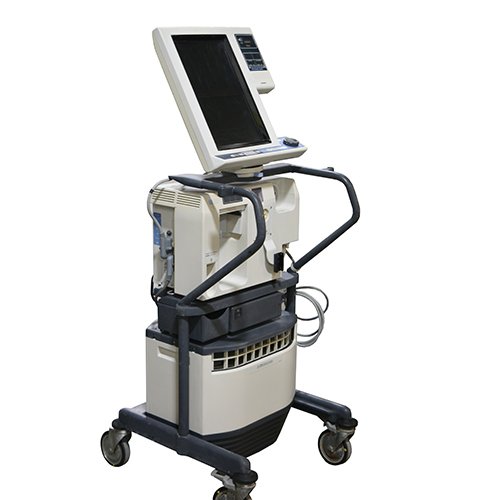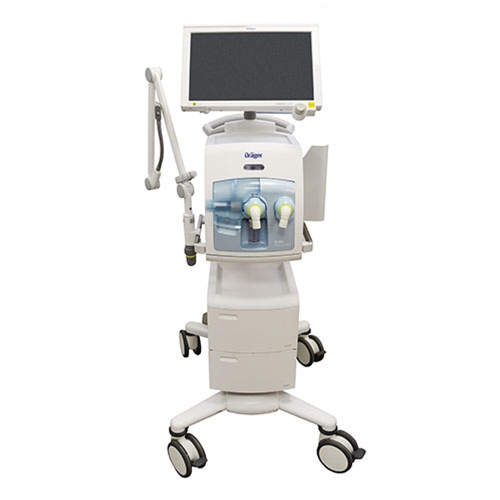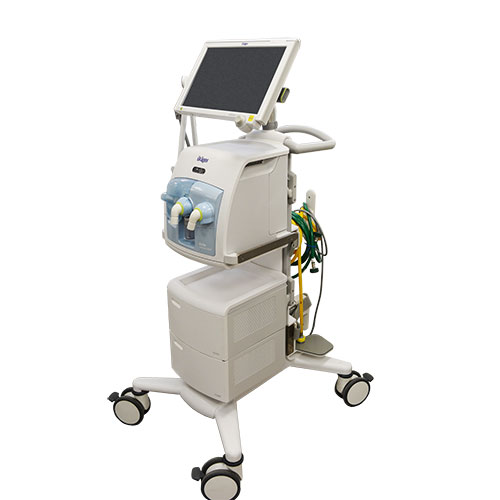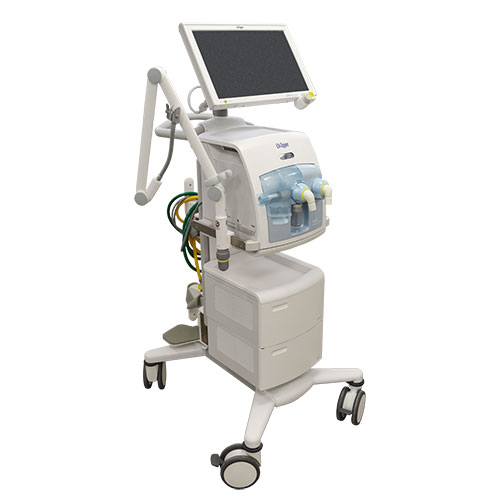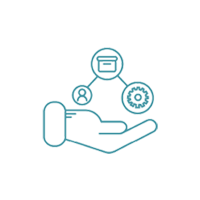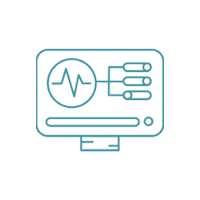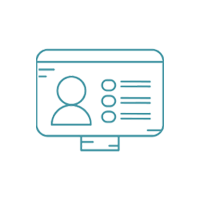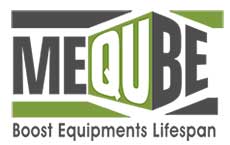MAQUET SERVO I
The Maquet Servo I ventilation system can be used on a variety of patients from neonatal, pediatric, to adults. It has the ability to handle the most acute phases of respiratory distress, through recovery, and to the waning phases of the ventilation process. The Servo-i continuously delivers outstanding ventilator treatment as gently as possible. This is in part to the performance, monitoring capabilities, treatment options, and tools that this ventilator offers. Since this ventilator can be used on a wide variety of patients, it is suitable for most environments from the ICU to the NICU department. The Maquet Servo-i ventilator allows you to choose the treatment option based on your patients’ needs without having to worry about the ventilator’s capabilities.
Servo-i supports both invasive and non-invasive ventilation. It combines the highest level of clinical performance with outstanding mobility and cost-efficiency. Ease of training, operation, and maintenance, as well as flexibility and modularity, ensures a low life-cycle cost. The economic benefits in operating this modular platform are considerable: there is no need to scrap and reinvest for different patient categories and situations.
Special Servo-i Ventilator Features
The Servo I ventilator is easy to use and learn about. The ventilation system provides the information you need, when you need it, allowing a fast and appropriate response from the user. The user-friendly interface gives easy access to all settings and even reaches the most important parameters through direct access knobs. This way, the clinician is always informed, in control, and able to react.
The Servo-i ventilation system is an all-in-one platform with advanced features you would normally expect from an advanced system. In patients with ALI and ARDS, it is difficult to identify harmful ventilator patterns, most importantly Barotrauma. The adult and universal Servo-i configuration have a feature called Stress Index that helps the clinicians detect and prevent potentially high-risk scenarios in adults. The ventilator analyzes changes in the compliance of the respiratory system during the constant flow of controlled breaths. This unit also has a Heliox option which is a low-density gas mixture of helium and oxygen. Heliox is widely recognized as a therapy that minimizes turbulence and improves CO2 elimination.
This ventilator is designed to meet your clinical needs. It’s a single system that offers a broad range of treatment options, which means it is always ready to adapt to your changing medical needs. This ventilator comes in 3 different configurations; infant, adult, and universal. The infant configuration doesn’t have the Stress Index and the Hyperbaric Oxygen Therapy (HBO) feature. The Adult configuration doesn’t have the Nasal CPAP or the HBO feature. If you are interested to know exactly what features each configuration has, call 1-800-GET-SOMA and one of our knowledgeable sales representatives will assist you.
Refurbishment Process
Soma Technology offers refurbished Maquet Servo I Ventilators that are technically and cosmetically brought back to OEM specifications. When these ventilators come into the facility, they are inspected, cleaned, and tested to see if any parts need to be replaced. Our in-house bio-medical engineers make the necessary replacements and calibrate the unit back to the original engineering manufacturer specifications. Once the unit is in prime shape, it undergoes special cosmetic restoration where it is sanded and repainted. If the ventilator needs new decals, we replace those as well, making the unit look as it did when it left the original manufacturer. Soma Technology, Inc. offers the Maquet Servo-i up to 50% below OEM prices with the same service and warranty as new.
- Enables treatment of all patient categories.
- Transportation with no loss of treatment quality within and between hospitals.
- Allows for investigation of different treatment options like Open Lung Tool and Automode.
- Invasive ventilation.
- Non-invasive ventilation with leakage compensation.
- CO2 Analyzer for end tidal carbon dioxide measurement that may give important insight into the efficiency of the ventilation.
- Y sensor measurement, for neonatal/pediatric and adult patients. Enables measurement of pressure and flow as close to the patient’s airway as possible.
- Nasal CPAP.
- Heliox – gives a more laminar flow that reduces work of breathing.
- Stress Index – will monitor hyperinflation or repeated alveolar collapse, thus allowing the identification of injurious ventilation (VILI).7
- Ventilation Record Card – Facilitates research work and presentations.
- Maquet ventilator accessories and consumables that are fully tested and designed to work optimally with Servo ventilators.
Specifications
Dimensions
- Height: 51.8 In (131.5 cm)
- Width: 22 In (56 cm)
- Depth: 25.2 In (64 cm)
- Weight: 44.1 lbs (20 kg)
General
- Method of triggering: Flow, pressure and Edi (optional)
- Max. operating pressure: Approximately 115 cmH2O
- Bias flow: 2 l/min
Inspiratory Channel
- Pressure drop: Max. 6 cmH2O at a flow of 1 l/s
- Internal compressible factor: Max. 0.1 ml/cmH2O
- Gas delivery system: Microprocessor controlled valve
- Inspiratory flow range:
- Adult: 0 to 3.3 l/s
- Infant: 0 to 0.55 l/s
Expiratory Channel
- Pressure drop: Max. 3 cmH2O at a flow of 1 l/s
- Internal compressible factor: Max. 0.1 ml/cmH2O
- PEEP regulation: Microprocessor controlled valve
- Rise Time, Expiratory Flow Measurement: <12 ms for 10 – 90 % response at flow of 0.05 – 3.2 l/s
- Expiratory flow range: 0 to 3.2 l/s
Screen
- Type: TFT-LCD module
- Size: 31 cm (12.1”) diagonal
- Viewing area: 246.0 x 184.5 mm
Operating Conditions
- Operating temperature: +10 to +40ºC
- Relative humidity: 15 to 95% non-condensing
- Atmospheric pressure: 660 to 1060 hPa
- Lowest pressure in breathing system: –400 cmH2O
Power Supply
- Power supply, automatic range selection
- 100 – 120 V AC ±10%
- 50 – 60 Hz
- 220 – 240 V AC ±10%
- 50 – 60 Hz
- Plug-in battery module
- Battery backup: Two battery modules are delivered with the ventilator.
- 50 – 60 Hz
- 220 – 240 V AC ±10%
- 50 – 60 Hz
- Battery capacity: Rechargeable, 12 V, 3.5 Ah each
- Recharge time: Approximately 3 h/battery
- Battery backup time: At least 3 h, when using six batteries.
- External 12 V DC: 12.0 V – 15.0 V DC, 10 A
- Max power consumption
- At 100 – 120 V: 2 A, 190 VA, 140 W
- At 220 – 240 V: 1 A, 190 VA, 140 W
Invasive Ventilation
- Inspiratory tidal volume
- Adult 100–4000 ml
- Infant 2–350 ml
- Inspiratory flow ≤200 l/min
- PEEP 0–50 cmH2O
- Pressure above PEEP
- Adult 0– (120-PEEP) cmH2O
- Infant 0 –(80-PEEP) cmH2 O
Non-Invasive Ventilation
- PEEP 2–20 cmH2O
- Pressure above PEEP 0– (62-PEEP) cmH2 O
- Leakage compensation
- Adult
- Inspiratory, up to 200 l/min
- Expiratory, up to 65 l/min
- Infant
- Inspiratory, up to 33 l/min
- Expiratory, up to 25 l/min
- Nasal CPAP, up to 20 l/min
Connectivity
- External device interfaces 2xRS232, remote alarm, MCare remote service
- IHE technical framework MSync HL7 converter
